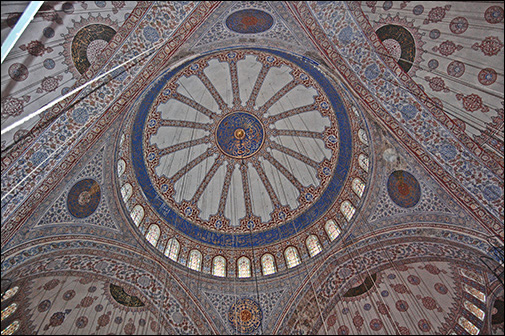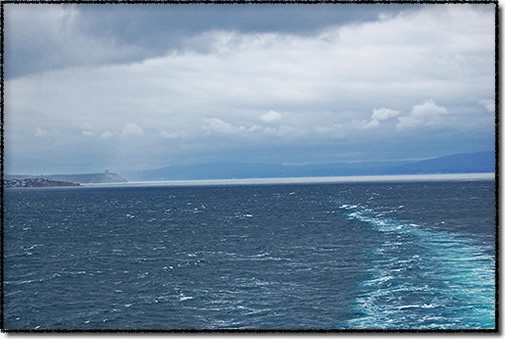|
The Blue Mosque
Photo by Ron Fritze ~ October 16, 2011
Dispatch from the Brilliance of the Seas:
Of Minarets, the Marathon,
And a One-Eyed Chora Cat.
I can assure you
that all those who had never seen Constantinople before
gazed very intently at the city, never having imagined
there could be so fine a place in all the world.
They noted the high walls and lofty towers encircling it,
and its rich palaces and tall churches,
of which there were so many
that no one would have believed it to be true
if he had not seen it with his own eyes,
and viewed the length and breadth of that city
which reigns supreme over all others.
— Description of Constantinople in 1203
by Geoffroy de Villehardouin, one of the Fourth Crusaders.
By Ron Fritze from the Mediterranean Sea
Filed on October 17 and Posted on November 7, 2011
Istanbul is one of those Arabian Nights places even though it is actually Turkish. Patches of minarets pierce the skyline. At periodic times during the day, the muezzins’ call to prayer for faithful Muslims rings out across the city. The place is a nightmare for advocates of orientalism as it really is rather exotic while at the same time also quite modern.
The city was originally Constantinople and before that it was Byzantium. The Emperor Constantine founded the city of Constantinople in 324 AD to serve as the eastern capital of the Roman Empire. It subsumed the existing town of Byzantium. Constantine placed Constantinople where he did because of its strategic location, linking the Black Sea to the Mediterranean Sea and providing a bridge between Europe and Asia. It was a crossroads of trade routes coming from every direction. Constantinople also occupied a very strong defensive position, which is the main reason why it was only conquered twice over a period of a thousand years.
The earlier city of Byzantium was a Greek colony and namesake to the Eastern Roman Empire, which became known as the Byzantine Empire. An even earlier Greek city named Chalcedon was situated across the Bosporus. When Byzantium was later founded, a joke circulated the Greek world to the effect that the people of Chalcedon were blind since they missed the great location that became Byzantium when it lay right before their very eyes.
Constantinople, possessing the support of a great Roman emperor and thanks to its strategic location, quickly grew to be the greatest city of the Mediterranean world during late antiquity and most of the Middle Ages. When the Roman Empire split into two parts, it also served as the capital of the Eastern Roman or Byzantine Empire.
Modern Istanbul is split by the body of water known as the Golden Horn. It divides the core of the old city from the suburb called Galata or Pera. The cruise ship terminal is at the mouth of the Golden Horn on the Galata side.
Christos Pantokrator mosaic at Chora
Photo by Ron Fritze ~ October 15, 2011
Our First City Excursion
Takes Us to Byzantine Istanbul.
Our ship arrived in Istanbul to chilly temperatures and a misty rain. We took an excursion to Byzantine Istanbul on 15 October. Our guide was a Turk named Gökhan, who was knowledgeable and friendly. Our first stop was the small Chora Church with its fine Byzantine mosaics.
Like many places in Istanbul, the Chora has a contingent of stray cats. One of them, a one-eyed gray tabby, took a liking to me. I suspect the tabby lost its other eye from fighting. Otherwise, he was in good condition and must have been a fierce fighter. I put out my hand and he rubbed on it. In fact he wanted me to pick him up and tried to climb up my leg to get into my arms.
Sadly, not all the Turks are so friendly and hospitable as that tabby. During the two days there, I found that most museum workers and police along with other people were surprisingly unhelpful when it came to giving directions. They professed to know nothing. Or perhaps they are blind like the Chaceldonians.
The Great Theodosian Walls
Withstood 21 of 23 Besieging Armies.
Leaving the Chora, our tour bus went through one of the gates of the Theodosian Walls and headed south along the walls to get to the Sea of Marmara. While the walls remain along their entire length, they vary greatly in how well they are preserved. The great Theodosian Walls were about four-to-five miles long. Lesser walls ringed the city along the shores of the Sea of Marmara and the Golden Horn. Since the Sea of Marmara has treacherous currents and can be very rough, a landing on that side of the city was virtually impossible. The Golden Horn was protected by the great boom chain that prevented enemy vessels from entering. As a result, these walls were also not as formidable as the Theodosian Walls.
The soldiers of the Fourth Crusade and Venice were able to storm Constantinople in 1204 because they had access to the Golden Horn and could attack the weaker walls. All told, the walls surrounding Constantinople comprised a total of about 13 miles. Constantinople’s walls did their job well. Between 324 and 1453, Constantinople was besieged 23 times. Only the Crusaders in 1204 and the Ottoman Turks in 1453 were successful in capturing the city.
Twylia and I had planned to walk the walls but, alas, the cold and rain put a stop to that plan. Thanks to the bus ride, however, I know the walk is possible and also that the area is pleasant and park-like, not the slum one might expect. So we’ll be back and get that walk in. After reaching the southernmost gate, our bus headed back into the old city toward Hagia Sophia.
Set on a peninsula, Constantinople’s lovely presence is enhanced by numerous beautiful buildings, including the great Hagia Sophia (Holy Wisdom), which was built as church, then converted to a mosque, and now serves as a museum. Built by the Emperor Justinian (527-565), who was one greatest rulers of the Eastern Roman Empire, it was the largest church in Christendom until the building of St. Peter’s in Rome.
The emperor’s primary goal was to restore the Roman Empire to greatness by reconquering the Western Empire. He almost succeeded. He also sponsored the legal reforms that codified the civil law of the Romans into the famous Corpus Juris Civilis or Codex Justinianus. This work was the basis for the civil law in Europe — and Louisiana for that matter.
Cheering for One's Favorite Chariot
One of the most important buildings in ancient Constantinople was the Hippodrome, the stadium, also sometimes called a “circus,” where the great horse and chariot races were held. It was built in the fourth century shortly after Constantinople was founded. It could seat 100,000 spectators. Besides the races, the Hippodrome was a general gathering place for disputes over politics and religion. After chariot racing fell out of fashion, the Hippodrome fell into disuse, ultimately becoming a quarry for material for other buildings. Today little remains except for a pleasant, long, and narrow square.
The people of Constantinople took their chariot racing seriously, dividing their loyalties into four fan clubs: Whites, Reds, Blues, and Greens. If this sounds like NASCAR, the comparison fits because it was a lot like NASCAR. The chariot race fan clubs were based on social class and also functioned as political factions. Rivalries between the two most important factions, the Blues and the Greens, sometimes turned very violent.
In 532, the residents of Constantinople were angry and feeling mutinous. They almost managed to overthrow the relatively new Emperor Justinian in a series of events known as the Nika Riots, an insurrection the emperor’s military initially seemed incapable of suppressing. Things got so bad that he considered fleeing Constantinople, but his wife Theodora persuaded him to stay, and not long thereafter the great general Belisarius led the emperor’s troops in a massacre of 30,000 rioters in the Hippodrome. After that, Justinian’s power was absolute, but much of Constantinople needed to be rebuilt as a result of the damage caused by the riots.
The interior of the Hagia Sophia from the eastern gallery
Photo by Ron Fritze ~ October 15, 2011
'Solomon, I Have Surpassed You!'
Justinian’s greatest building achievement was the Hagia Sophia (Holy Wisdom) Church, built on the site of a church destroyed during the Nika Riots. It was constructed in a mere five years, 532 through 537. The building’s most impressive aspect was its great dome, making it the largest domed building in Europe until Brunelleschi constructed the Duomo in Florence about a thousand years later. Hagia Sophia was so impressive that Emperor Justinian exclaimed, “Solomon, I have surpassed you!” The original dome did not last long as an earthquake toppled it a few years after the completion of Hagia Sophia. A steeper dome replaced it and it has managed to stay in place for one thousand five hundred years.
I cannot say that I disagree with Justinian’s assessment of his achievement. Approaching Hagia Sophia from the outside, one is impressed with the massive character of the structure. On the inside it seems even bigger. We were told that you could place a seventeen-story building inside the dome. Climbing the ramp up to the gallery, I can believe that. I was about six stories up, or so it seemed.
Previously I had the good fortune to visit the Pantheon, St. Paul’s, and Florence’s Duomo. Now all I lack is getting inside St. Peter’s in Rome to have experienced the top five domed churches on the planet. I have read that the Duomo is bigger than Hagia Sophia. With apologies to the Florentines, it certainly seemed to me that Hagia Sophia was bigger. It may be that the Duomo is only taller.
Column of the Serpents
Photo by Ron Fritze ~ October 15, 2011
Vandals Stole the Snake Heads.
Afterward, our guide led us to the Hippodrome site. Alas, all that remains of the once great building is an open park. We did see the obelisk of Thutmosis III that Constantine had moved to the Hippodrome. Another interesting artifact in the Hippodrome Park is the Column of Serpents. This bronze statue of three intertwined serpents was cast to commemorate the Greeks’ victory over the Persians at Plataea. It was set up at the oracle’s sanctuary at Delphi, but Constantine moved it to his new city. Unfortunately, about three hundred years ago, the heads of the three serpents were vandalized and lost, except for a fragment preserved in the archaeological museum.
Next we were taken to the obligatory carpet shop. It was a nice place called Matis, and I sort of wish we’d bought another Turkish carpet. Next time I visit Istanbul or Kusadasi, I will. After that we stopped at the Grand Bazaar, a vast shopping area of 4,000 shops. It was built around 1500 and is the world’s earliest shopping mall. You can get lost there, so we stayed on a straight line.
On our way back to meet the bus, we bought a few souvenirs. Out on the street, I tried some grilled corn on the cob. I don’t know if all the street vendor corn is like this one, but the guy was selling field corn. Next we sat down and I ordered a Turkish coffee. It comes in a small cup but carries a big caffeine load. I must say, I felt energized. I had to put sugar in mine as it was rather bitter for my taste. That helped. When I finished the last drop, there was thick sediment at the bottom of my cup. Turkish coffee is different but I would recommend trying it, especially if you need a pick-me-up. On the other hand, if you have a heart condition, it could kill you.
Marathon runners cross the Galata Bridge.
Photo by Ron Fritze ~ October 16, 2011
Dodging the Runners,
I Arrive at the Topkapi Museum.
Our ship stopped for two days in Istanbul. Our second day was a Sunday, 16 October. It was also the day of an international marathon. Some Ethiopian won, I believe. Ethiopians have become the powerhouses of the marathon world. The weather also remained chilly with that misty rain. Twylia decided to stay on the ship but I headed out for the Topkapi Museum, formerly the palace of the Ottoman Sultans and the training school of the Janissaries. We were warned that public transport was shut down for the marathon. The tram was stopped but I was up for a walk. Not quite sure how to navigate Istanbul, I followed the track of the tram. It brought me to a gate of the Topkapi, where I dodged across the street to avoid runners and find my way inside.
In the courtyard of the Janissaries is the entrance to the museum. I bought my ticket and noticed the stray dogs in the park. They were snoozing and trying to stay out of the rain. The Topkapi is a vast complex. My goal was to see the famed Piri Reis Map, but I failed. Every attendant at the museum professed to know nothing about it except for a quite pretty girl working at one of the gift shops. A friendly old Turk also knew what I was talking about. But no one knew the location of my prize. I had a great time anyway.
The Hall of Audience at Topkapi
Photo by Ron Fritze ~ October 16, 2011
Gates, Halls, and Wondrous Views
I saw the Gate of Felicity where the Ottoman Sultans began their military expeditions. I also saw the Hall of Audience where they met envoys, visiting officials, and petitioning subjects. Another fine room was the Divan where the governing council of the Ottoman Empire met. By the way, it had big divans lining the walls. There were wondrous views of the Golden Horn, the Bosporus, and the Sea of Marmara from various balconies. I could see remnants of the walls that guarded the shorelines of Constantinople.
Also on the grounds were the Sofa Kiosk and the Bagdad Kiosk. They were like enclosed gazebos. On a pleasant day, it must have been quite relaxing to sit in them. There was even a circumcision room where the little Ottoman princes experienced their operation. I am not sure how old they were when they had the operation, but if the officials waited too long, I would assume it could have been a rather traumatic experience for the little guys given the lack of anesthetics.
During my time at Topkapi, I made friends with another cat.
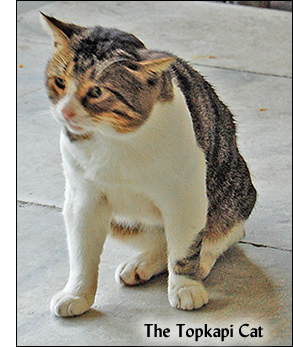 The outer courts may be dog territory, but the inner courts are most definitely cat territory. My new cat friend was white and brown. He jumped into my lap, but a Japanese girl wanted a picture of him in her lap, so she took him away. Before anyone could snap the photo, the critter scurried back to me. The Japanese girl insisted, but the cat wasn’t interested and took off running. Given that these cats are feral, she was lucky she didn’t suffer the claw-of-the-paw-feline-martial-arts move.
The outer courts may be dog territory, but the inner courts are most definitely cat territory. My new cat friend was white and brown. He jumped into my lap, but a Japanese girl wanted a picture of him in her lap, so she took him away. Before anyone could snap the photo, the critter scurried back to me. The Japanese girl insisted, but the cat wasn’t interested and took off running. Given that these cats are feral, she was lucky she didn’t suffer the claw-of-the-paw-feline-martial-arts move.
Back out in the Court of the Janissaries, I bought a little souvenir and got my first Turkish lira. Unlike a few years ago, the Turks are not so funny about letting their currency get into foreign hands. It pays to have lira as it saves one from getting short-changed using Euros. I also got a look at the church of Hagia Irene (Holy Peace). It is said that Constantine built the original Hagia Irene, which also served as the church of the Patriarch of Constantinople until it was superseded by Hagia Sophia. It was also the site of the Second Ecumenical Council of the early church. The current Hagia Irene was built by Emperor Justinian.
The dome of the Blue Mosque from the inside
Photo by Ron Fritze ~ October 16, 2011
Young Ahmet Wanted More Minarets.
I left Topkapi through the Imperial Gate, the Bab-i Hümayan, and headed toward the Blue Mosque. It is officially named the Sultanahmet Mosque because it was built by Ahmet I during the first decade of the seventeenth century. Ahmet came to the throne at the age of fourteen and died of typhoid at twenty-eight.
It is called the Blue Mosque because the interior is decorated with blue tiles. Another unique feature of the Blue Mosque is its six minarets, the typical number being four. When Ahmet had the six minarets built, the central mosque at Mecca also featured six minarets. Not to be upstaged, the Meccans added a seventh minaret.
The Blue Mosque is big but nowhere as impressive as the Hagia Sophia. Unlike Hagia Sophia, it still functions as a mosque, although I didn’t see a lot of Muslims praying. It looked like about a dozen when I was there but that was not a prayer time. Nor did I notice people dropping and praying when the muezzins sang the call to prayer. I did note that a lot of Turks liked to sit and relax with a glass of wine or beer. You will see some veiled women on the streets, but the vast majority is not veiled, and many of the younger women prefer jeans to traditional attire.
While at the Blue Mosque I was hijacked by a friendly carpet salesman but managed to escape without a carpet. Searching for the tram station, which was now back in operation after the marathon, I found a shop that sold stamps and mailed postcards. So I got my postcards mailed. The woman managed to conduct my business, all the while engaging in a vigorous cellphone conversation. Yes, cellphone addiction has gone global.
A Quick Foot in Asia
Figuring out how to get a tram token, I rode to the Karakoy stop near the cruise terminal but my objective was to go Asiatic. I was going to take a ferry to Asian Istanbul across the Bosporus so that I could say that I have set foot in Asia. It was easy and cheap, two Turkish lira, and only takes about fifteen minutes. It was rainy and blowing but I still got some good pictures. The ferry is rather small and you feel the swells and waves, but I don’t get seasick, so I was fine. Getting to the other side, I got off, took some pictures, and bought a return token. Then like the groundhog, I climbed back on a ferry.
Back at Karakoy, I saw a nice restaurant by the ferry station called the Paradise. They sold Efes Pilsener, the main Turkish beer. I had tried it and liked it in Kusadasi, so I ordered an Efes draft and some stuffed grape leaves. Both were delicious. Then I walked back to the ship. As soon as I got on board, I called Twylia and got the message machine. I left a message purporting to be the captain of the Brilliance, telling her that I had been elected as the compromise prime minister of Turkey by the rival political parties and that they were not about to let me go. When she heard the message, she said that was okay with her.
I was gone about eight hours — a good day except for missing the Piri Reis Map. They didn’t even have a postcard for it, yet the cruise terminal was plastered with exhibition posters for the elusive map.
In case you are wondering, Why Istanbul, not Constantinople? Here’s the story.
Mehmet II, the conqueror of Constantinople, did not change the name of the city. It continued to be called Konstantiniyye, which was the Turkish version. Some have suggested that Istanbul is simply a corruption of the Turkish pronunciation of Constantinople. Another suggestion is that for centuries, the Greeks just referred to Constantinople as “The City” i.e. Polis. The phrase, “(in)to the city” in Greek is eis tin polin, which to Turkish ears would sound like Istanbul. Truth be told, nobody knows for sure. We do know that the Ataturk officially changed the name from Constantinople to Istanbul in 1930. Why? That’s nobody’s business but the Turks!
Where the Ghosts of History
Swim, Battle, and Lurk
The Brilliance pulled out of Istanbul at 10 p.m. on 16 October. Our next stop was Athens. It is a short trip, so the captain took his time going through the Sea of Marmara. When we got up at 7:30 a.m. on 17 October, we were just about to enter the Dardanelles Straits. My lecture was scheduled for 9:30. I got some pictures of us approaching Gallipoli, where we picked up the pilot. After my lecture — it went well with a good crowd — I proceeded to take more pictures. It was cold and windy, but I persevered.
Like Istanbul, the Dardanelles have experienced a lot of history. The ancient Greeks believed that a man named Leander swan the Dardanelles to see his girlfriend Hero. Unless he had anti-freeze for blood, he didn’t do it on a day like the one when we were passing through.
The southern shore of the Dardanelles was the location of legendary Troy. Later when Xerxes invaded Greece, his troops built a bridge of boats across the Dardanelles so that his gigantic army could march to battle rather than be ferried. Several naval battles of the Peloponnesian War were fought in the Dardanelles. It was an important bottleneck in the east-west trade routes. Many wanted to control the Dardanelles. Constantinople’s control of them contributed mightily to the wealth of the city. The Venetians and Genoese would also get involved with their own trading stations at Constantinople.
Then came the Ottoman Turks, who conquered the badly deteriorated city in 1453. Constantinople’s fall marked the final end of the Roman Empire as it has been famously told by Edward Gibbon in his Decline and Fall of the Roman Empire. Constantinople became the capital of the Ottomans and experienced a new age of brilliance under their control during the sixteenth century. But the city also went into a long decline, which culminated in an Ottoman alliance with Germany in World War I.
In 1915 Winston Churchill planned an expedition to capture the Dardanelles and the Bosporus and knock Turkey out of the war. The expedition failed but not before inflicting hundreds of thousands of deaths on the British, French, Australian, and Turkish troops embroiled in an eight-month battle at Gallipoli after an Anglo-French fleet of battleships failed to punch their way into the Sea of Marmara. Many, many ghosts of history lurk in the Dardanelles. For me, their presence through myth and history is fascinating.
We cruised into the Aegean and dropped the pilot. Our next stop will be Piraeus and Athens on 18 October, but if you have been following the news, you know that things are a bit tense there with almost daily wildcat strikes, including the transportation system. This visit, I had hoped we could see the Aeropagus where St. Paul preached about the Unknown God, but we decided that might not be a good idea. Instead we booked an excursion to go see Corinth and the Corinthian Canal. And we still get to stick with the St. Paul theme. After all the Taoists tell us that in travel, it is the journey that is important, not the destination. I agree as long as when I am in Greece I get to drink some Mythos Beer!
Entrance to the Dardanelles from the Aegean
Photo by Ron Fritze ~ October 17, 2011

Click on the black panther to read about Ron Fritze's latest book,
Invented Knowledge: False History, Fake Science, and Pseudo-religions. |



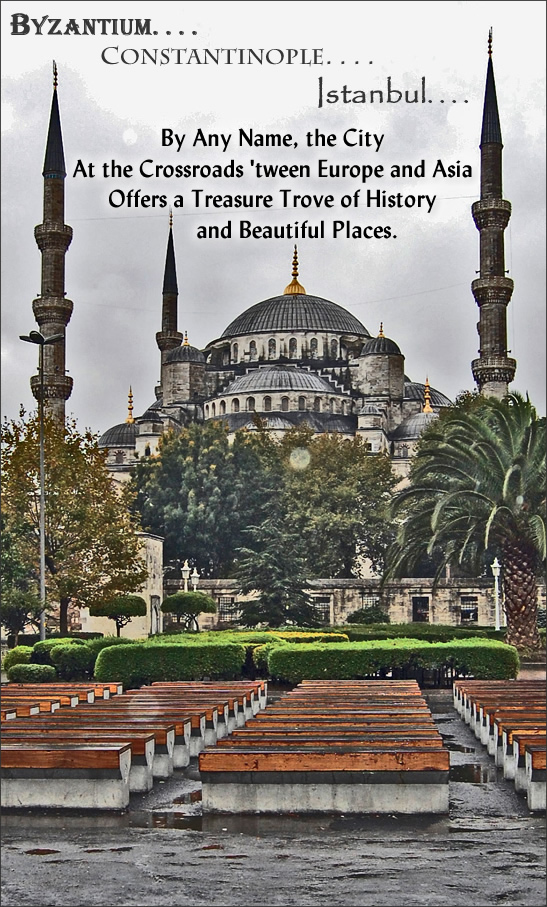
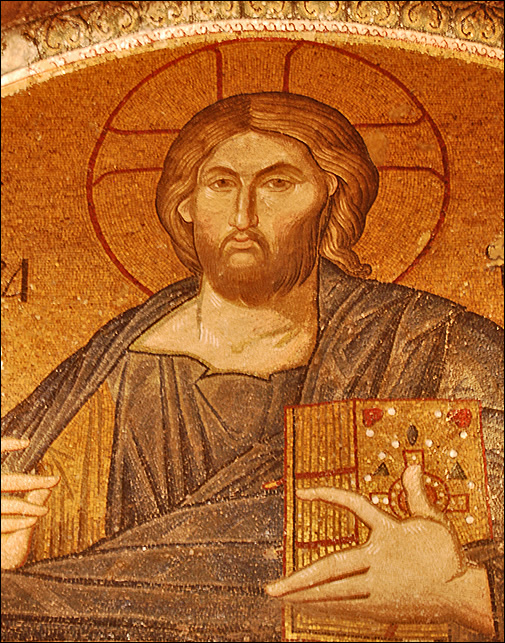
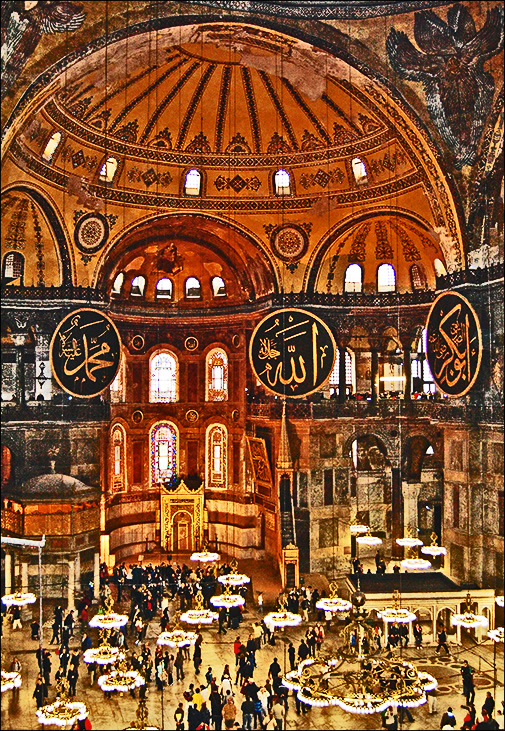
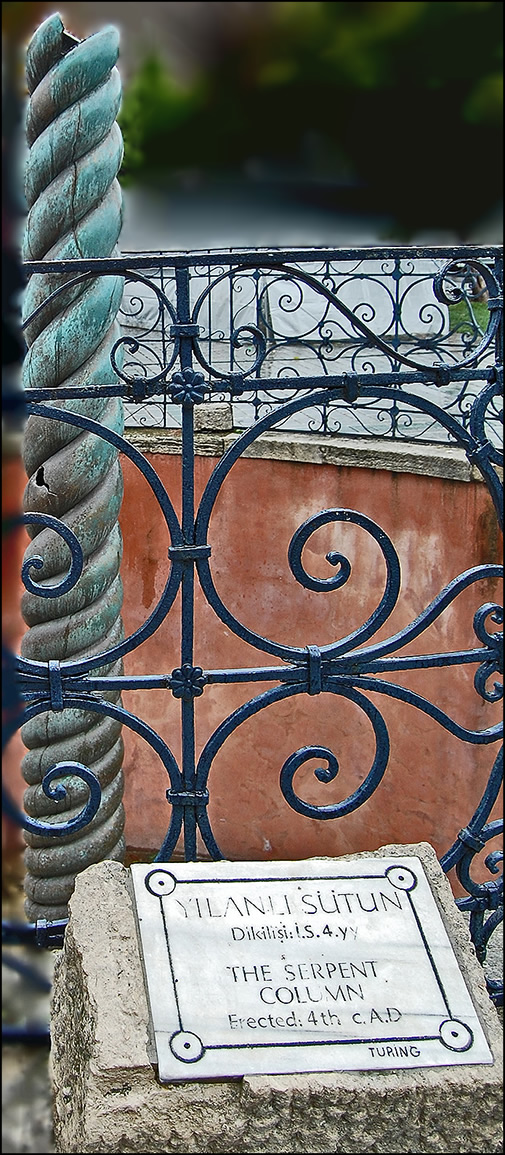
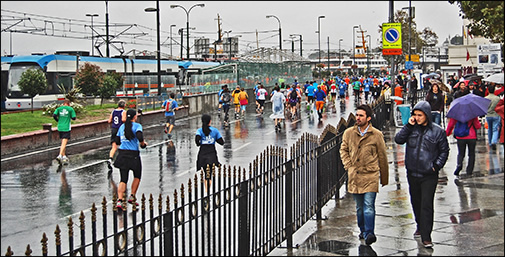

 The outer courts may be dog territory, but the inner courts are most definitely cat territory. My new cat friend was white and brown. He jumped into my lap, but a Japanese girl wanted a picture of him in her lap, so she took him away. Before anyone could snap the photo, the critter scurried back to me. The Japanese girl insisted, but the cat wasn’t interested and took off running. Given that these cats are feral, she was lucky she didn’t suffer the claw-of-the-paw-feline-martial-arts move.
The outer courts may be dog territory, but the inner courts are most definitely cat territory. My new cat friend was white and brown. He jumped into my lap, but a Japanese girl wanted a picture of him in her lap, so she took him away. Before anyone could snap the photo, the critter scurried back to me. The Japanese girl insisted, but the cat wasn’t interested and took off running. Given that these cats are feral, she was lucky she didn’t suffer the claw-of-the-paw-feline-martial-arts move.